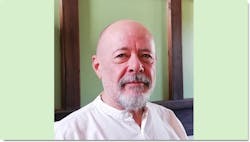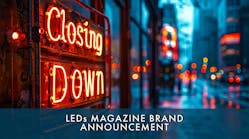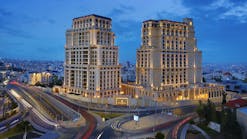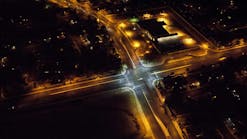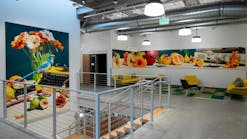Evolving the lighting design mind — From standards to creativity (MAGAZINE)
It’s an honor and a privilege to be invited by LEDs Magazine to have the Last Word in the run-up to this year’s Strategies in Light conference. (See you there — in an entirely virtual sense, of course!)
At the conference, I’ll be riffing on what happens when a designer leaves the codes behind, so someone at the magazine thought it might be an idea to get me to trial my presentation by attempting a bit of self-analysis as to how I got myself into this mess in the first place. Here goes…
The story begins in the early 1970s with my decision to aim for qualifications in what we now call electrical building services, rather than taking the regular route to an electrical engineering degree. It meant that I couldn’t be trusted to design electrical transmission systems, but I did know how to plan an air conditioning installation. Oh, yes — and I could crunch the numbers to come up with a working lighting design.
At the time, architectural lighting was getting more complicated as we moved toward new low-energy lighting sources, and we were at the start of a boom in retail design. You have to remember that, at this time, serious articles were being published that talked about what a good idea it was to use spotlighting in fashion shops. Happy days!
My lighting education was entirely built around calculations and what lighting conditions were required for which applications. In this world, the Landolt Ring test reigned supreme. And that was it for the first decade of my lighting design experience. The issue — call it a problem, if you like — was the kind of people I was spending all my time with, including marrying one. Interior design was growing at an incredible rate by the mid-80s and it probably helped that I was working the central London area, and supping a witch’s brew of equal parts craziness, insolence, and startling talent.
Just crunching those numbers wasn’t going to get me far in that company. Just bad behavior led to lighting a shoe shop with nothing but naked halogen lamps because you could, or creating the largest spotlight in town by combining huge symmetrical stadium projectors with 50W halogen capsule lamps because the optics created the narrowest possible beam available — after all, it was a kind of Tex-Mex restaurant in London’s theater-land and we were channeling an Area 51 vibe. Don’t ask me why. I never got the answer to that one.
Somewhere among all that fun and frivolity, I stopped thinking of myself as an illumination engineer…good heavens, I think I’ve become a designer. I’m gonna need better shoes!
And something more serious was also happening. The development phase of the UK’s post-war regeneration was taking off, with a new wave of architectural design changing the appearance of, well, just about everything — museums and galleries, retail malls, hotels, and of course office buildings and business parks. And electrical consultants were putting together their project briefs. Oh dear, I wish they wouldn’t. We were plunged back into the constraining world of the codes, and those numbers had to fit. Full disclosure: I was once asked to leave a project meeting because the architect thought I was about to deck the electrical engineer. He may have been right, and I’ve never felt the same about anyone from The Wirral since. (Don’t worry about The Wirral. It’s near Liverpool, where they do things differently. Just don’t go there.)
To succeed, we had to develop a symbiosis between performance standards and what it was that occupants actually experienced. The hard truth is that real design picks up immediately where the numbers stop, because the numbers by themselves have nowhere else to go. After all, every client wants something unique to their project. If the numbers are all the same, then you’re obliged to take the design scheme somewhere else.
The word I’ve deliberately not used until this final paragraph is, of course, creativity. It’s what you hope and pray will turn up every time you take a design brief. You listen to the brief and then the client says, “What do you think?” I look at them and say, “I haven’t got a clue, but hang on a minute and let’s see what comes up.” One day that may not happen — then I’ll know I’m in trouble.
Get to know our expert
JOHN BULLOCK is editor of The Light Review and founded an independent lighting design consultancy, John Bullock Lighting Design. Bullock has worked in the lighting design and construction fields for more than 40 years. A former editor with Lux Review, he has written extensively about lighting design practice and is a vocal advocate for sustainability in the lighting supply and design chain. Bullock has worked on industry conference programs and will speak at Strategies in Light 2021, held virtually from Aug. 24–25.
Enjoyed this article? Visit our digital magazine for more like this >>
